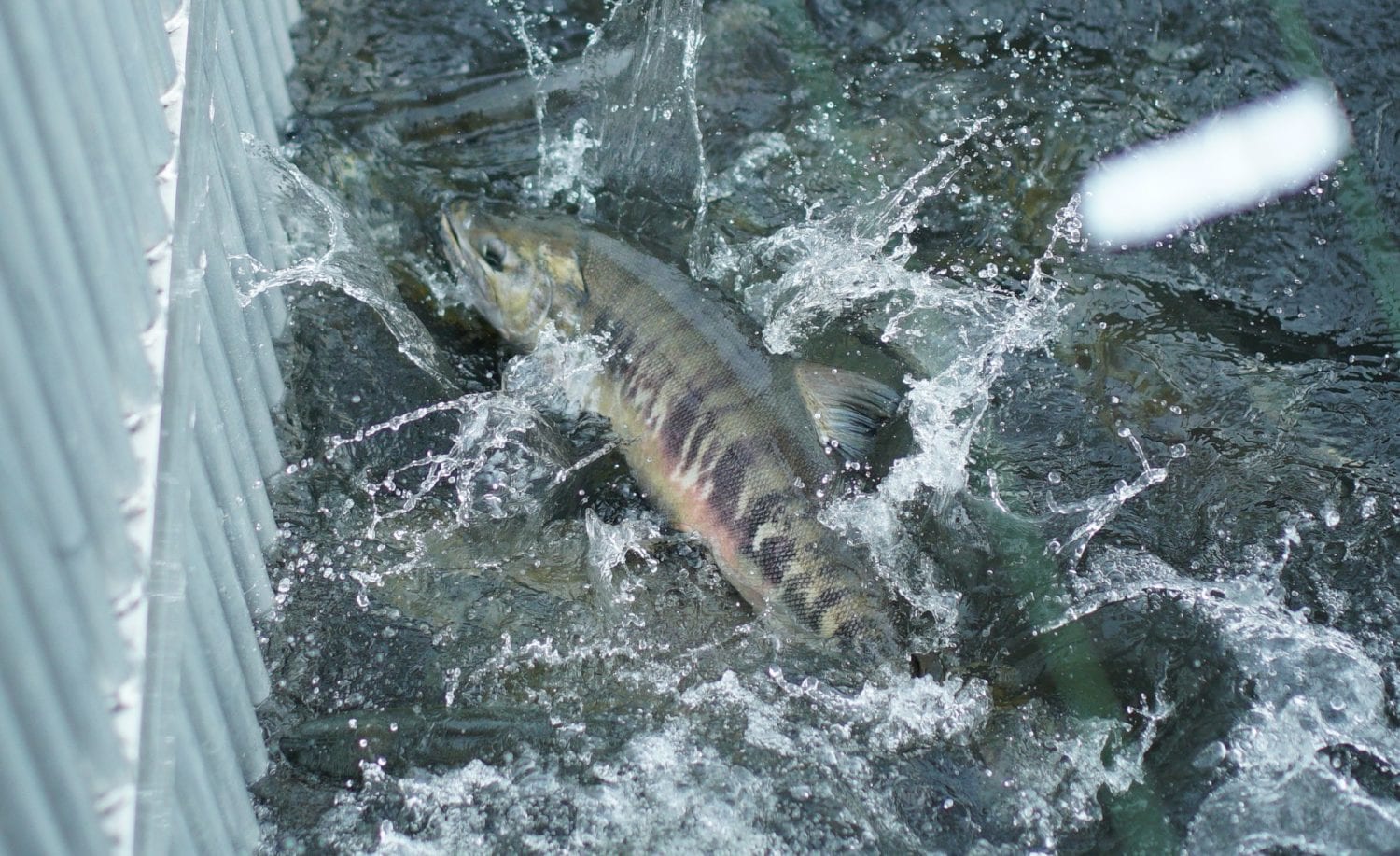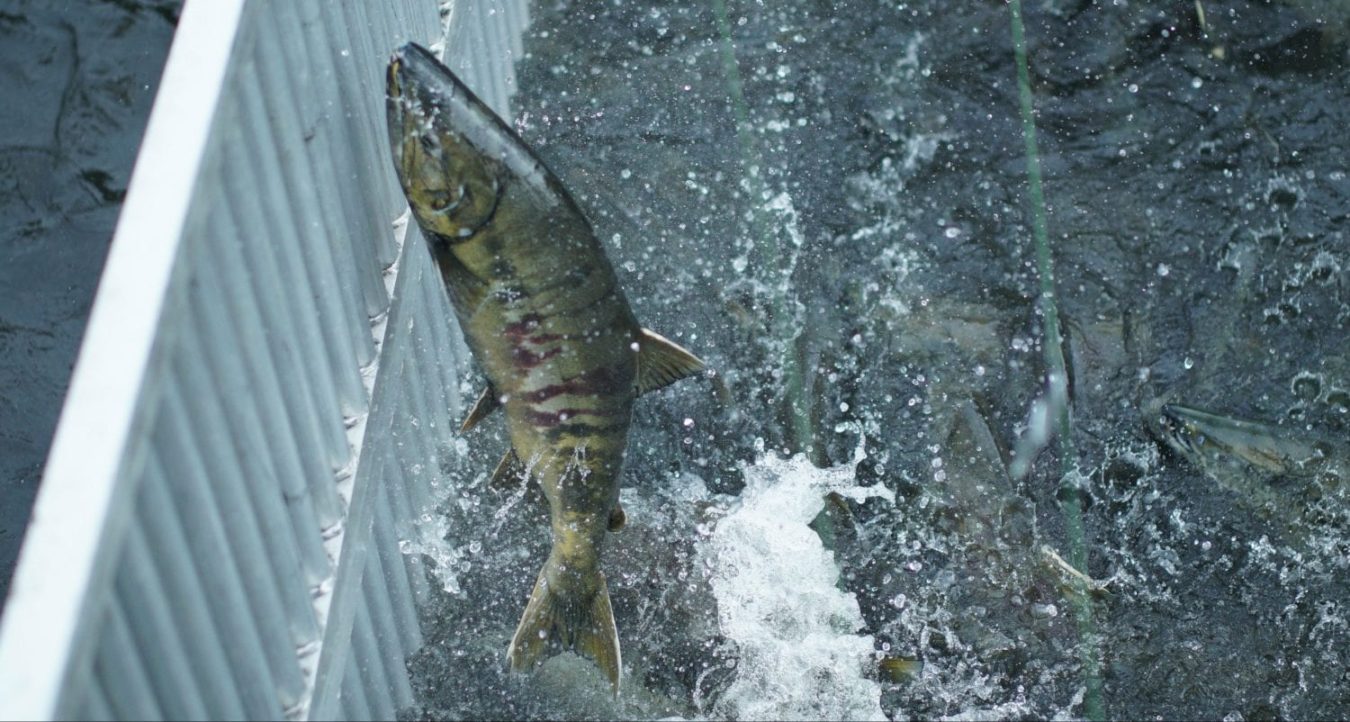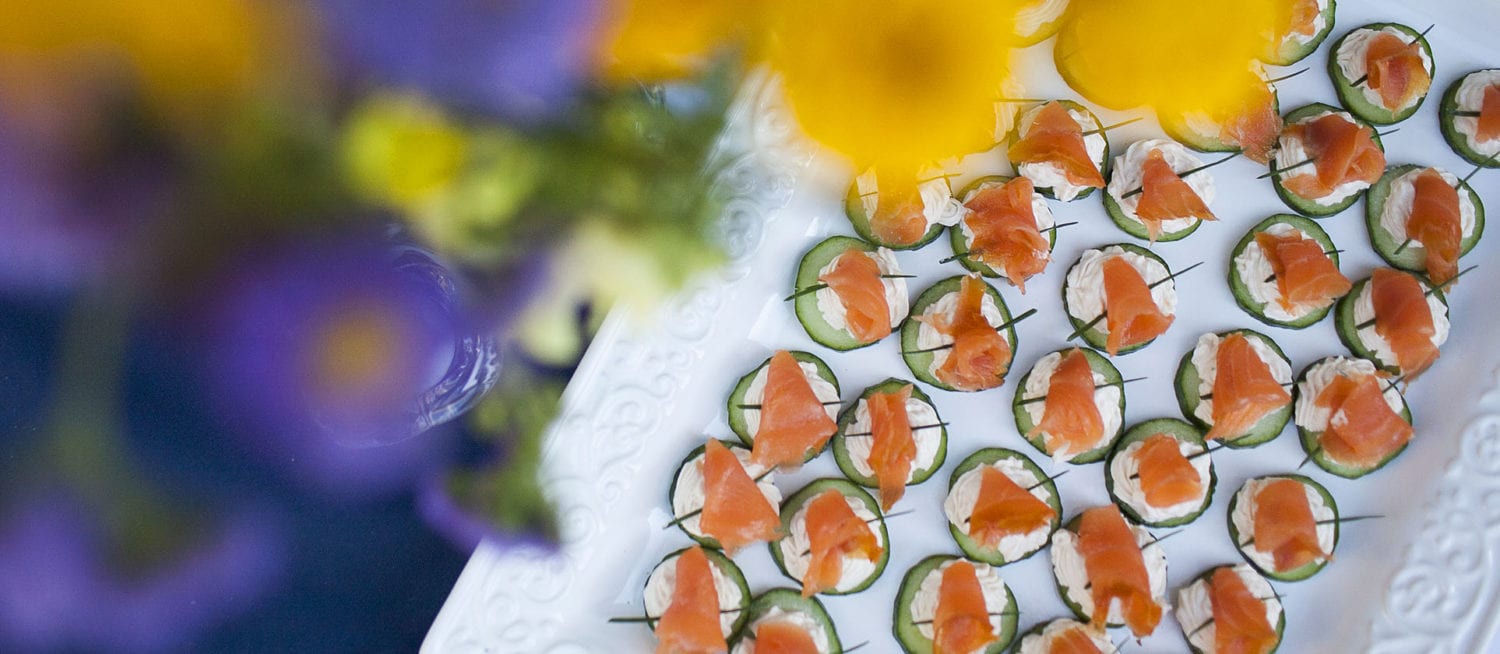Content by Toni Shiurba Published December 13, 2017
What is red and glistens in the light? Give up? King salmon, of course! Top of the line, prized for its girth, savored for its rich nutritious fat, kings are coveted by fishermen and discriminating diners alike.
Here on San Juan Island, restaurants primarily source fish from our very own Salish Sea and Alaska. With the decline in salmon throughout the Salish sea this year, chances are your dinner will most likely be from Alaska! Ever wonder just what species of salmon is staring back at you? Well, let me decode the mystery. Whether it’s the slippery one you just landed with your rod and reel or the one swimming in garlic and butter on your dinner plate, I can help.
Chinook Salmon
Chinook Salmon are the state fish of Alaska (actually, Oregon, too). And rightly so. Alaska is the land of the grand. Grand mountains rise out of ice-green waters, topped by true blue glaciers. Huge grizzly and polar bears roam the forests and the sea ice. Gigantic moose dwarf the unwary hiker who might chance upon one. I know because I’ve seen them up close and far too personal. Big stuff, ok? Chinook salmon ride along the “grand” train. Weighing upwards of 130 pounds, they are the Kings of all of the salmon.
Blue-green tops, silvery sides and white bellies characterize Chinook Salmon. There are black spots on its’ back, dorsal fin and both lobes of its’ tail. Blackened lips make it appear as though it has gone “Goth”. For its size, the Chinook has a small eye. If salmon were given awards, Kings would win all the accolades.

Coho Salmon
Sports fishermen love Coho or Silver salmon. Their lively nature makes hunting and reeling them in exciting. Coho like to jump out of the water and unabashedly dance the shimmy, shimmy coco pop. Really! They are the aerial acrobats of coastal waters. Juveniles especially are lively while defending the territory they hunt. Their flesh is red and considered heavenly in taste.
Sockeye Salmon
Gillnestters in Southeast Alaska refer to as the “money fish”. I know, as I was a crew for twelve years on a thirty-five foot fishing boat that travelled every spring from Friday Harbor to Southeast. The captain did not allow us to eat any Sockeyes on the days long openings because they brought the most dollars from the tender. They have deep red/orange meat whose flavor rivals that of Kings. These fish are prime. Fishermen also sometimes refer to Sockeyes as “blueback’s” for the color of their skin in the ocean. Maybe it is an oblique reference to being the bluebloods of their species.
Pink Salmon
Humpies or pink salmon have a pronounced hump on their back that grows ever bigger near spawning time. Add a hooked nose to their appearance and they bring up the image of the character “the Hunchback of Notre Dame”. But their story is not a sad one. Pinks, like your little pinky, are the smallest of the salmon. What they lack in size and handsomeness, they make up for in number. Cotton candy colored filets are often canned or smoked. If you are a salmon burger lover, this species is the usual ingredient tickling your tongue. And so no one need shun this little salmon. Pinks have a winning role after all!
Chum Salmon
 Chum or Dog Salmon get a bad wrap as the least favored salmon species. These big boys can’t jump very well and so have difficulty traversing raging, rocky currents and waterfalls. Dogs are named for their canine-like teeth and large size. Their skin color is metallic blue and silver. Although their fat content is less than other salmon, Chum are the ticket for making cold-smoked salmon and lox for your bagels.
Chum or Dog Salmon get a bad wrap as the least favored salmon species. These big boys can’t jump very well and so have difficulty traversing raging, rocky currents and waterfalls. Dogs are named for their canine-like teeth and large size. Their skin color is metallic blue and silver. Although their fat content is less than other salmon, Chum are the ticket for making cold-smoked salmon and lox for your bagels.
Here’s a riddle for you. How are salmon like trees? Give up? Well, you can tell the age of a salmon by the number of rings on its’ scales! Pretty cool, huh?
Well, there it is. The low down on my favorite seafood-beautiful, Alaskan salmon!
Experience Salmon on San Juan Island
Known for our fresh seafood, the San Juan Islands is a definite must-experience. Dine with us at Coho Restaurant and we’ll be sure to satisfy that seafood craving!


